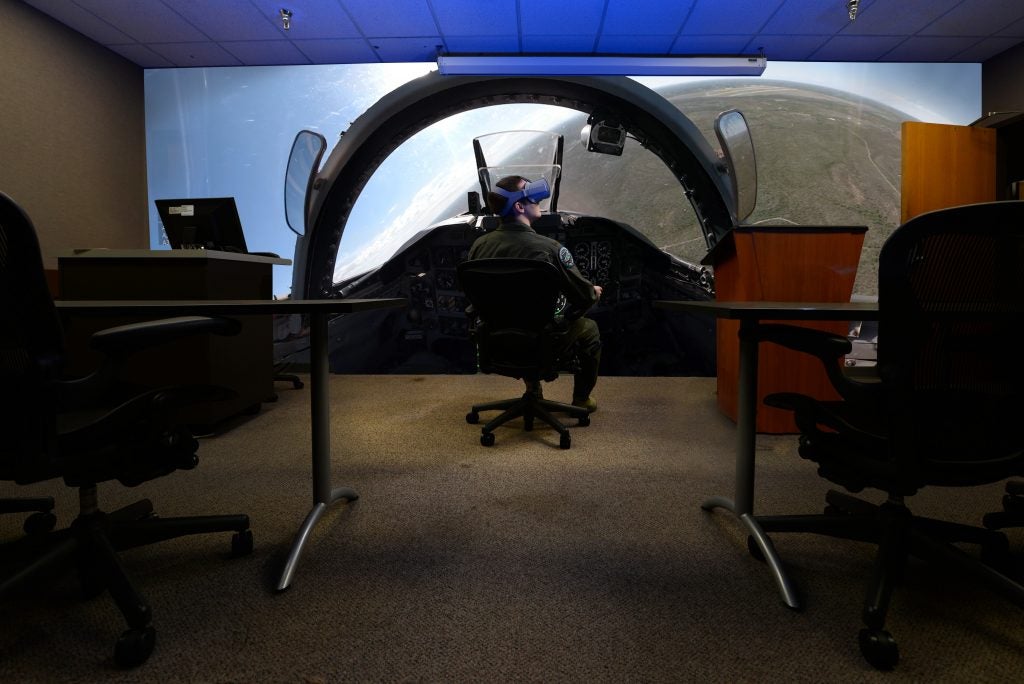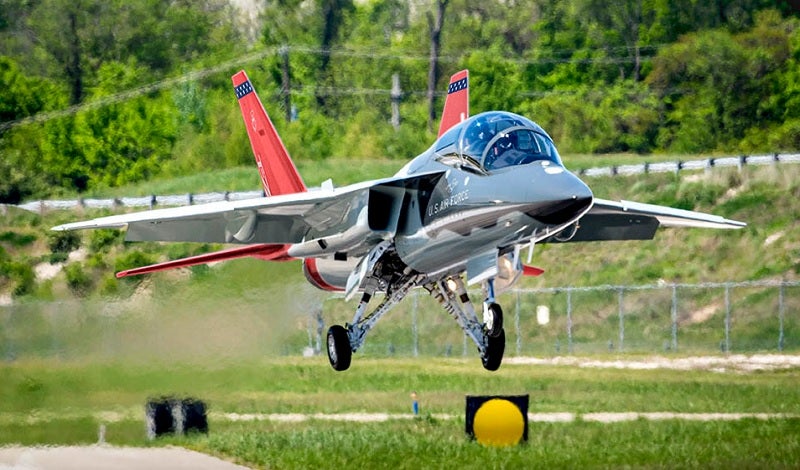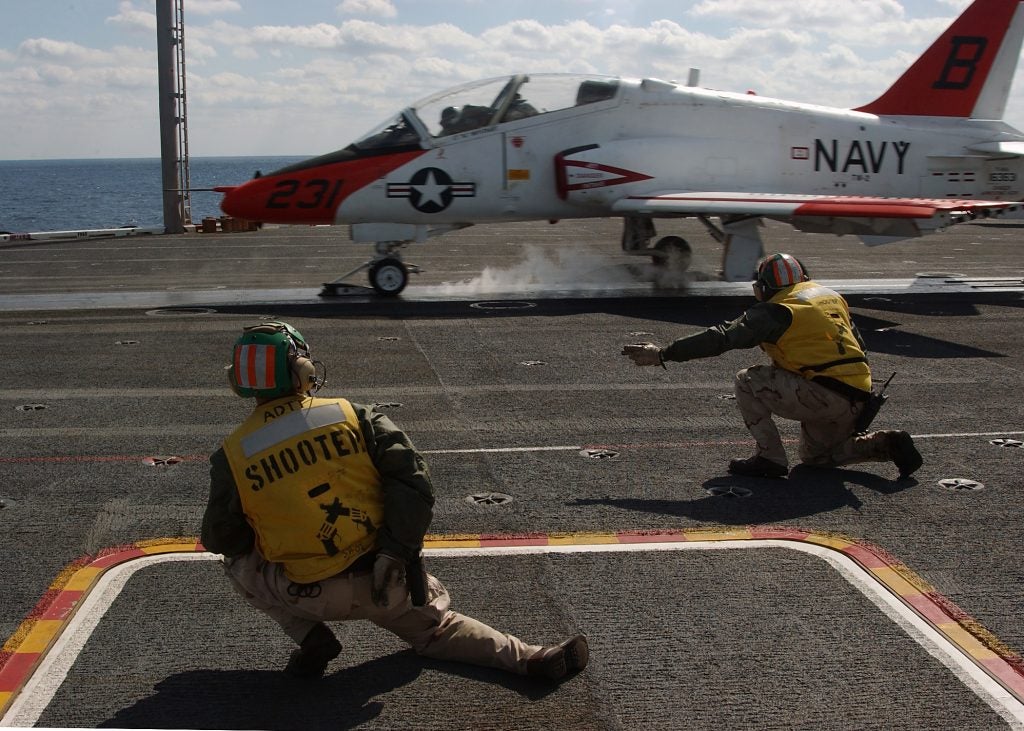US Navy Exploring Procurement Of “Tactical Surrogate Aircraft”
The United States Navy has issued a request for information on industry capability to supply a “Tactical Surrogate Aircraft” to support future pilot training.
In a 20 October request for information, the Navy said that it is exploring a possible purchase of 64 such aircraft, with a possible programme start in fiscal year 2024 or 2025. The aircraft will be used to carry out three missions: serving as a flight lead aircraft for Fleet Replacement Squadrons training naval aviators on frontline combat aircraft such as the F/A-18E/F Super Hornet and F-35C Lightning II; augmenting flight time and training on the aforementioned frontline aircraft; and providing adversary air support.
The Navy states that the aircraft “needs to simulate and/or replicate current and future fighter aircraft systems by providing the training environment and relevant experience to build tactical skills, systems management skills, and decision making skills required for weapon system employment actions”. Towards this, the Navy says that candidate aircraft will require:
“Secure, open architecture large area displays with an additional input port to enable the capability to display additional inputs (separate from and parallel to the aircraft Operational Flight Program [OFP]) to replicate frontline (Type Model Series) aircraft displays and enable simulated displays of aircraft combat systems, simulated inputs, and simulated weapons.”
Additionally, the Navy requires a “universal stick and throttle connection to enable reconfiguration of the stick and throttle quadrant to mimic Hands-on Stick and Throttle (HOTAS) of frontline TMS aircraft”, as well as a “low cost” helmet-mounted display capable of mimicking frontline aircraft. The specified minimum level aircraft speed is at least .9 indicated Mach number (IMN) or 450-500 knots indicated airspeed (KIAS) at 10,000 feet mean sea level (MSL) with a flight ceiling of 45,000 feet, while it must have G force structural limits of at least 7.5 G with sustained 6 G at 10,000 feet.
While the request specifies a two seat “fighter type” aircraft, the Navy says that it is seeking engineering analysis on the cost of removing the rear crew station and replacing it with permanent additional fuel or avionics bay volume without changing the external mold lines of the aircraft, as a potential option for future development including a dedicated aggressor variant of the aircraft. Analysis is also sought on several other features desired on a hypothetical aggressor variant, including an internal Infrared Search and Track (IRST) or data-link cued Infra-red sensor; radar or data-link cued threat emulator; as well as an internal training electronic attack system.

The Navy also seeks engineering analysis of an advanced “smart chair” of the aircraft cockpit and HOTAS, which would provide a virtual reality environment for ground based practice of all flying capabilities, with artificial intelligence (AI) provided capability for assessment and demo capability. This smart chair could also have previous flight performance information uploaded to review and identify points for rehearsal or assessment. The chair would be used within all Squadron secure or unsecure facilities.
While the Navy launched its Undergraduate Jet Training System program in 2020 to seek a replacement for its current T-45 Goshawk advanced jet trainers, the specifications in the request are nearly identical to an Air Force request for information for a “Advanced Tactical Trainer” released earlier this month. While the T-45 was reengineered from the BAE Systems Hawk to support carrier operations, UJTS candidates are not required to be capable of arrested landings or catapult launches, with the Navy currently intending for the resulting aircraft to only conduct touch and go landings on carrier decks. Navy officials have previously indicated that the implementation of Precision Landing Mode flight software on more Navy aircraft could change how the Navy trains its pilots, given the significant extent to which it eases carrier landings and the resulting training demands.

Boeing has recently stated that it is considering pitching the T-7A for the Advanced Tactical Trainer RFI, and had announced in August that the Red Hawk would be its UJTS contender. Other UJTS contenders include Lockheed Martin and Korea Aerospace Industries’ T-50, as well as Leonardo’s M-346 Master, although none have issued any comments on the new request for information as of writing.

